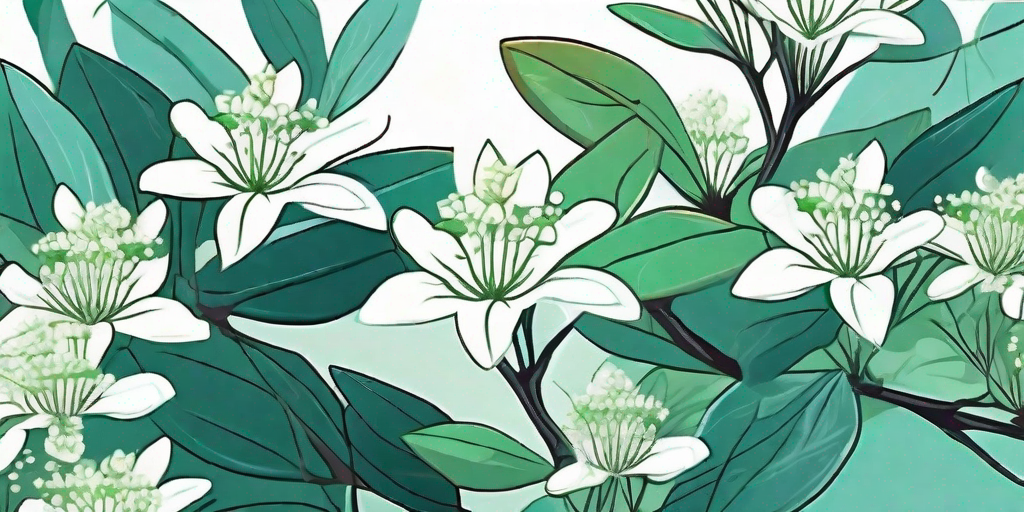
The Ligustrum, also known as the Privet, is a versatile and hardy plant that can add a touch of lush greenery to any garden. But, like any plant, it has its secrets and quirks. So, let's dive into the world of Ligustrum and discover how to make this plant thrive in your garden.
Understanding the Ligustrum
First things first, let's get to know our green friend a little better. The Ligustrum is a genus of about 50 species of flowering plants in the olive family. Yes, you heard it right, the olive family. So, if you've ever dreamed of having a Mediterranean garden but live in a less-than-Mediterranean climate, the Ligustrum might just be your ticket to paradise.
These plants are native to Europe, Asia, Australasia, and the Mediterranean region. They range from evergreen shrubs to small trees, and some species are popular as ornamental plants in gardens. So, whether you're looking for a small, unassuming plant to fill a gap in your garden or a statement tree to impress the neighbors, the Ligustrum has got you covered.
Choosing the Right Ligustrum
With so many species to choose from, picking the right Ligustrum for your garden can feel like trying to find a needle in a haystack. But don't worry, we've got some tips to help you make the right choice.
Firstly, consider the size of your garden. If you've got a small garden, a dwarf species like the Ligustrum sinense 'Sunshine' might be a good fit. This compact shrub grows to about 1.5 meters and has bright yellow leaves that can add a pop of color to your garden.
On the other hand, if you've got a large garden and want a statement tree, the Ligustrum lucidum, also known as the glossy privet, might be the one for you. This tree can grow up to 10 meters tall and has glossy, dark green leaves that can create a stunning contrast against a light-colored wall or fence.
Planting Your Ligustrum
Once you've chosen your Ligustrum, it's time to get your hands dirty. But don't worry, planting a Ligustrum is as easy as pie. Or, at least, it's as easy as planting a tree, which is pretty easy if you follow our steps.
First, choose a spot in your garden that gets full sun or partial shade. The Ligustrum is a sun-loving plant, but it can also tolerate a bit of shade. So, whether your garden is a sun-drenched paradise or a shady retreat, the Ligustrum can fit right in.
Next, dig a hole that's twice as wide and just as deep as the root ball of your Ligustrum. Place the plant in the hole, making sure that the top of the root ball is level with the ground. Then, backfill the hole with soil, firming it gently around the base of the plant.
Caring for Your Ligustrum
Now that your Ligustrum is happily settled in its new home, it's time to learn how to take care of it. And the good news is, caring for a Ligustrum is a walk in the park. Or, in this case, a walk in the garden.
Firstly, water your Ligustrum regularly, especially during dry periods. These plants like a good drink, but they don't like to have wet feet. So, make sure your garden has good drainage to prevent waterlogging.
Secondly, feed your Ligustrum with a slow-release fertilizer in spring and again in summer. This will give your plant the nutrients it needs to grow strong and healthy. And remember, a well-fed Ligustrum is a happy Ligustrum.
Finally, prune your Ligustrum in late winter or early spring to keep it in shape. You can also prune it after flowering to encourage a second flush of blooms. Just remember to wear gloves and long sleeves when pruning, as the sap of some Ligustrum species can irritate the skin.
FAQs
Is Ligustrum invasive?
Some species of Ligustrum, such as the Ligustrum sinense and the Ligustrum vulgare, can be invasive in certain areas. These species can spread quickly and crowd out native plants. So, if you're considering planting a Ligustrum, check with your local extension service to make sure it's not invasive in your area.
Is Ligustrum poisonous?
Yes, all parts of the Ligustrum plant are poisonous if ingested. So, if you have pets or young children, it's best to keep them away from this plant.
Does Ligustrum attract pests?
Ligustrum plants can attract certain pests, such as aphids and scale insects. However, these pests can be easily controlled with a good insecticide or by introducing beneficial insects, such as ladybugs, into your garden.
Conclusion
So there you have it, the secrets of the lush Ligustrum. With its versatility, hardiness, and stunning greenery, this plant can be a great addition to any garden. So why not give it a try? After all, every garden could use a touch of Mediterranean charm.
And remember, the key to a successful garden is patience, care, and a bit of cheeky humor. So, get out there, get your hands dirty, and start growing your Ligustrum. Happy gardening!















